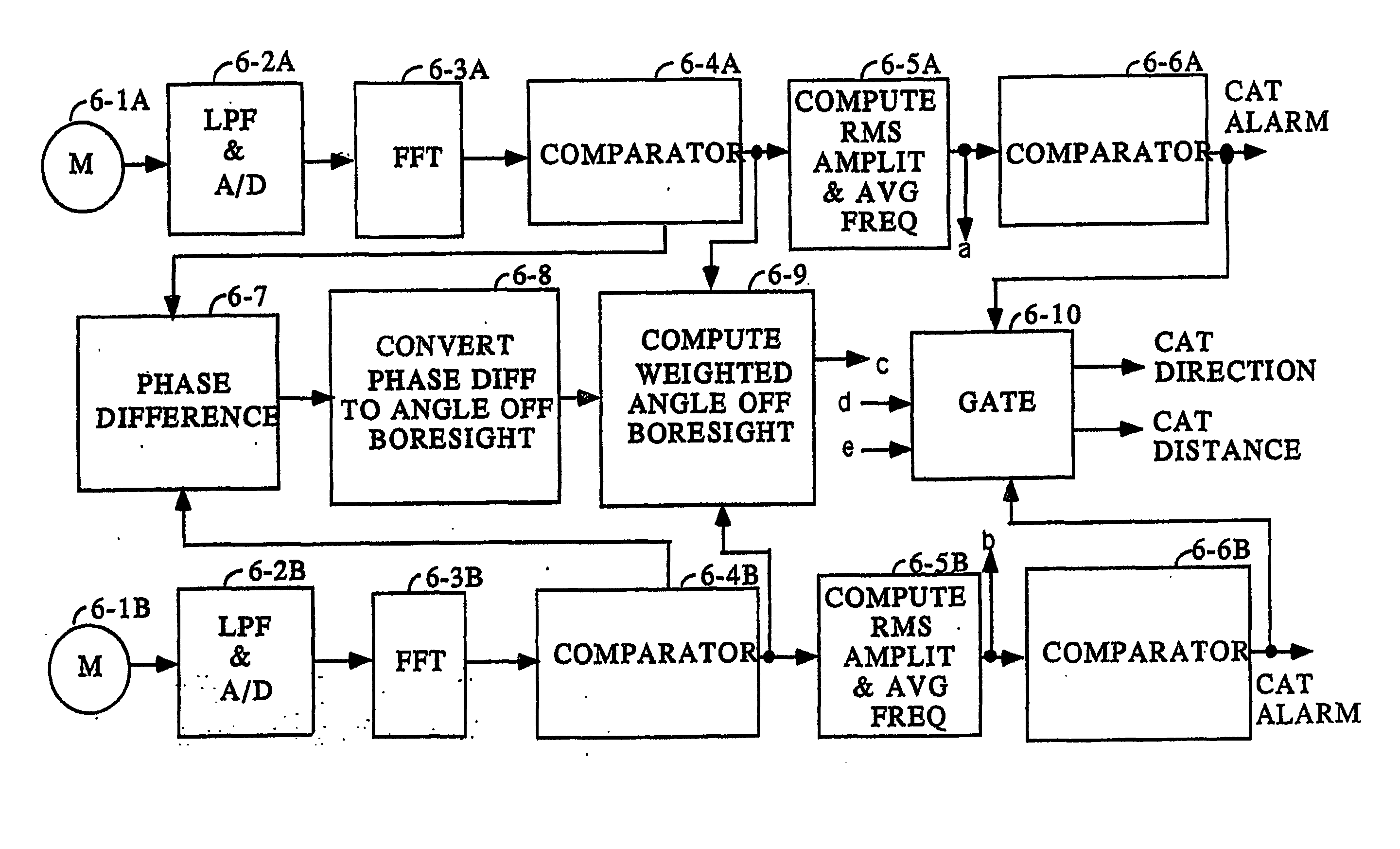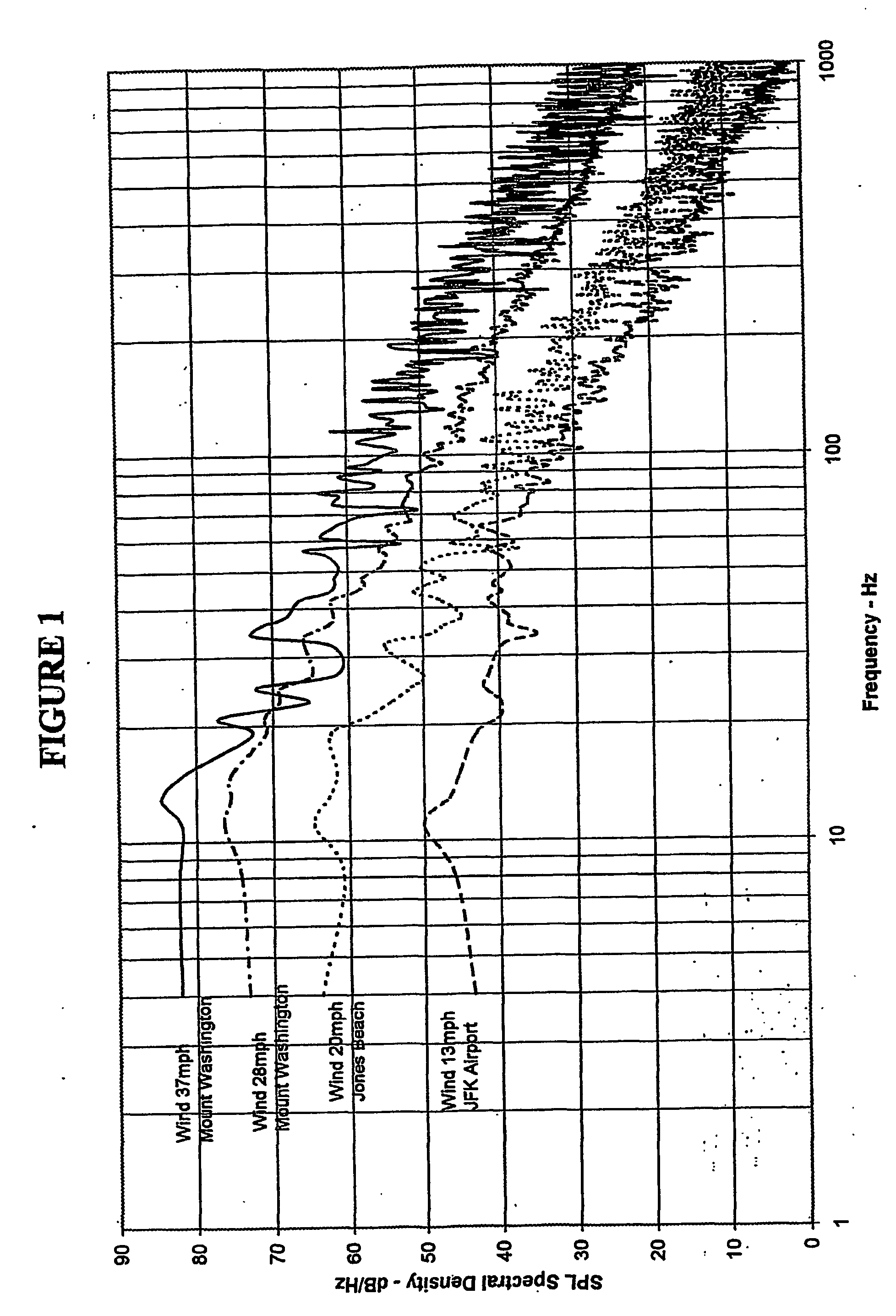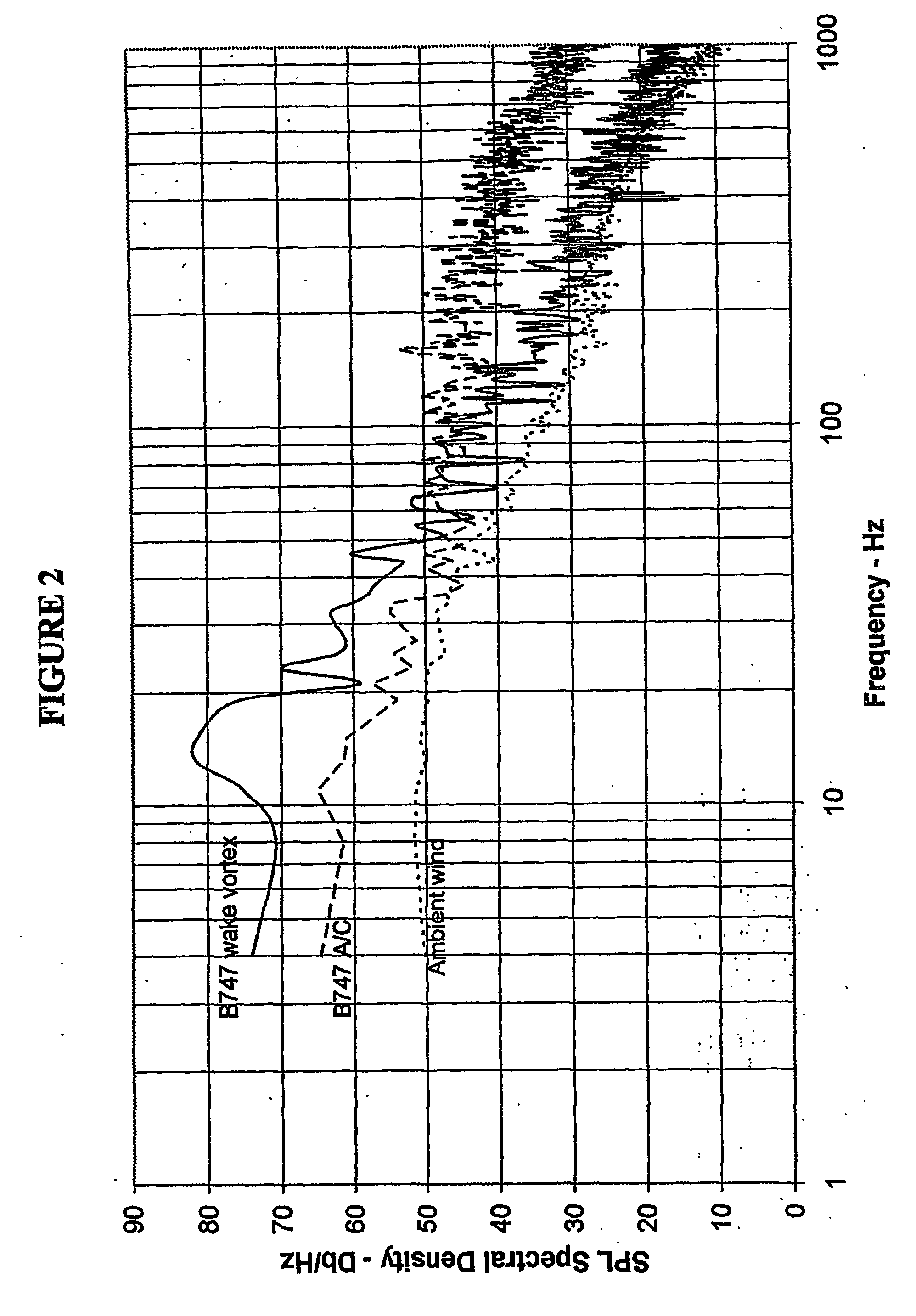Atmospheric turbulence hazard detector
a hazard detector and atmospheric turbulence technology, applied in the direction of instruments, transmission monitoring, clear air turbulence detection/forecasting, etc., can solve the problems of short detection range, dangerous loss of altitude, and severe aircraft hazards
- Summary
- Abstract
- Description
- Claims
- Application Information
AI Technical Summary
Problems solved by technology
Method used
Image
Examples
Embodiment Construction
[0045] A flow is laminar or turbulent depending on the value of its Reynolds number Re, which is given by Re=UL / v, where L is a characteristic length of the flow, U is a characteristic speed of the flow, and v is the fluid kinematic coefficient of viscosity. When the Reynolds number is below a critical value, viscosity smooths out lateral velocity variations, and laminar flow is favored.
[0046] As the Reynolds number increases above a critical value, the flow becomes unstable so that a small disturbance produces irregular eddying motion. The largest scale eddies appear first. These eddies are also unstable due to having high Reynolds numbers and break down into smaller second order eddies. Second order eddies generally also have high Reynolds numbers and break down into smaller third order eddies. This process continues until eddies with Reynolds numbers below a critical value are reached. These eddies dissipate, their energy expended overcoming frictional forces. The largest scale ...
PUM
 Login to View More
Login to View More Abstract
Description
Claims
Application Information
 Login to View More
Login to View More - R&D
- Intellectual Property
- Life Sciences
- Materials
- Tech Scout
- Unparalleled Data Quality
- Higher Quality Content
- 60% Fewer Hallucinations
Browse by: Latest US Patents, China's latest patents, Technical Efficacy Thesaurus, Application Domain, Technology Topic, Popular Technical Reports.
© 2025 PatSnap. All rights reserved.Legal|Privacy policy|Modern Slavery Act Transparency Statement|Sitemap|About US| Contact US: help@patsnap.com



